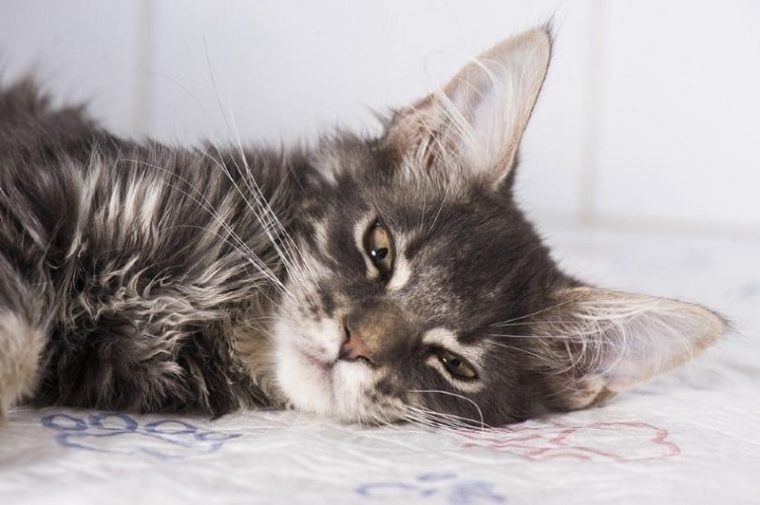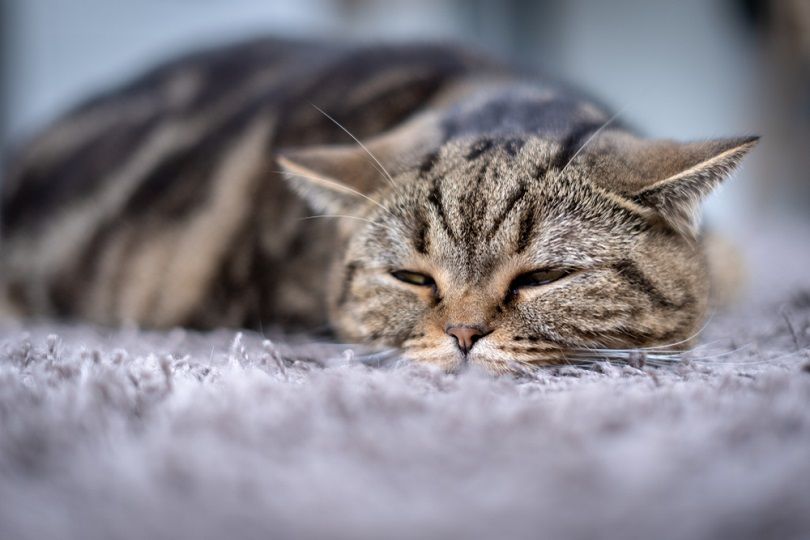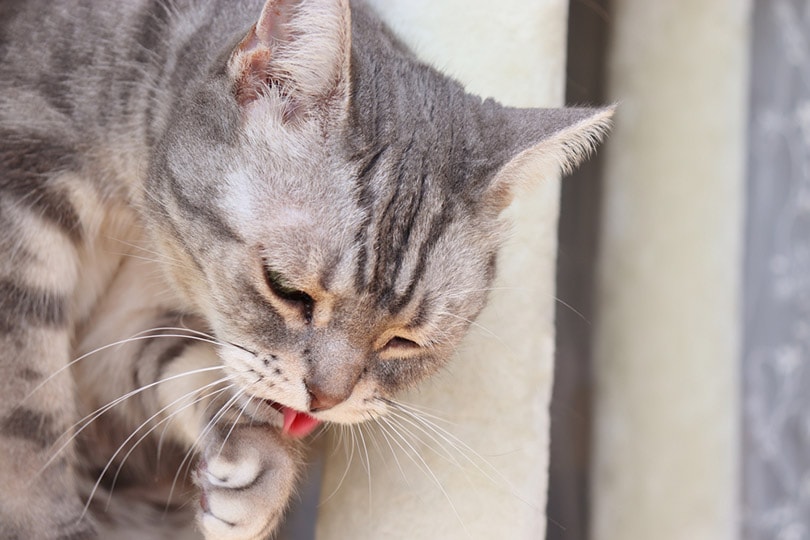
Click to Skip Ahead
Lead used to be a common thing to encounter, thanks to the popularity of lead-based paints. It was also used in items like fishing sinkers, solder, and even toys. Once it was determined that lead posed notable dangers to humans and animals, its use was stopped, but that doesn’t mean you and your cat won’t ever encounter lead. In older homes, lead-based paints are often still present, and paint chips or dust from these paints can pose a danger. It’s important to understand the dangers and symptoms of lead poisoning in cats, especially if you live in an older home.
What Is Lead Poisoning?
Lead poisoning, also known as lead toxicosis or lead toxicity, is caused by increased levels of lead in the blood of your cat. Excess lead in the bloodstream can cause a variety of issues for your cat’s body, including disrupting normal cell functions and causing damage to the cells. It can lead to the displacement of both calcium and zinc, which are necessary for normal cell metabolic functions.

What Are the Causes of Lead Poisoning?
Lead poisoning most commonly occurs after exposure to lead paint chips or dust from old paints. However, cats can also experience lead poisoning from ingesting items containing lead, like lead sinkers and projectiles. Thankfully, lead poisoning in cats is extremely uncommon.
Notably, cases often occur during home renovations. Therefore, It’s extremely important to determine if the paint in your home contains lead and take all precautions, including getting pets out of the home during renovations.
Lead is most commonly absorbed by the digestive tract, making it a higher risk for pets that tend to eat or lick things they shouldn’t. However, exposure to lead via the digestive tract can also occur from exposure to lead-containing dust that gets into the mouth. In an acidic environment like the stomach, lead becomes ionized, which enhances its exposure potential.
The form of lead that a cat is exposed to will impact the absorption rate of the metal. For example, a cat that has eaten something containing lead will absorb a different amount of lead than a cat that has inhaled dust from lead paint.
Where Are the Signs of Lead Poisoning?
The symptoms of lead poisoning can mimic many other problems, so it can be difficult at first to diagnose this toxicity. Physiologic symptoms include nausea, vomiting, abdominal pain, abdominal guarding, loss of appetite, abnormal behaviors, tremors, seizures, hyperexcitability, weakness, panic and anxiety, blindness, nystagmus, and ataxia, or difficulty walking and moving normally.
Your vet will perform a variety of diagnostic tests to determine what is wrong with your kitty. With lead poisoning, lab abnormalities include anemia, red blood cell abnormalities, elevations in liver and kidney values, and hemolysis, or destroyed red blood cells.
If your cat has consumed something containing lead, it will show up on X-rays. With long-term lead exposure, white lines may appear in portions of the long bones.

What Are the Potential Dangers of Lead Poisoning?
Frequently Asked Questions (FAQs)
Is Lead Poisoning Deadly?
It can be, but the prognosis for lead poisoning is less dire when caught and treated early. For cats that have advanced to experiencing seizures and other severe problems, the prognosis is much more guarded, and the outcomes may not be favorable.
Is Lead Poisoning Treatable?
Yes, lead poisoning is treatable if caught early. Chelation therapy is the current treatment for lead poisoning, with calcium disodium ethylene diamine tetra-acetate (Ca-EDTA) and Succimer being the current preferred treatments. Chelation therapy involves introducing a detoxifying agent to bind the lead in the body and prevent any additional lead from being absorbed. It’s also essential to detoxify the environment your cat lives in to ensure further lead exposure doesn’t occur.

How Do I Know if My Home Has Lead in It?
There are a variety of ways to determine if there is lead in your home. At-home tests are available at many home improvement stores. These tests will let you know if lead is present, but they will not let you know just how much lead you’re dealing with. Environmental lab tests are a more specific type of test, but they do require more than a simple at-home test. Labs that are certified to perform these tests can be found through the National Lead Laboratory Accreditation Program. Licensed risk assessors are the best option for identifying lead in your home, and some professionals recommend having a licensed risk assessor perform an assessment of a home before you buy it. This is especially beneficial if the home was built before 1950.
When Should I Take My Cat to the Vet?
As soon as you begin seeing symptoms is the right time to take your cat to the vet. Cats do not do well without eating for even short periods of time, often experiencing liver damage, so not eating for more than a day is cause for concern. You should also take your cat to the vet immediately for any serious symptoms, like seizures, difficulty walking, shortness of breath, and tremors.
Conclusion
Lead poisoning in cats is an uncommon but extremely serious issue. The outcomes are typically good if your cat receives treatment in time. To keep your cat safe from lead, it’s a good idea to have your home tested for lead, especially before performing any kind of home renovations. Also, make sure to keep any lead-containing items, like antique decorative bowls and toys, up and out of the reach of your cat at all times. Never give your cat food or water from a bowl that says it is not intended for food use. If your cat begins exhibiting any symptoms of lead poisoning, get them to a vet for an accurate diagnosis and appropriate treatment.
Featured Image Credit: Kachalkina Veronika, Shutterstock







